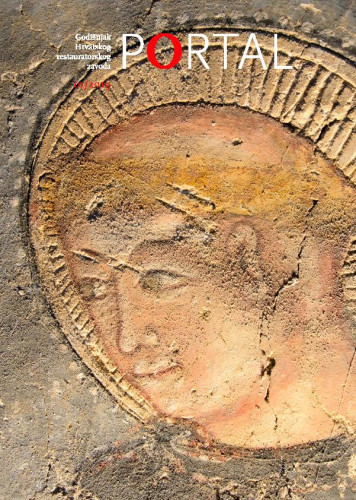Rad obuhvaća istraživanje povijesnih podataka o dvorcu, njegovim vlasnicima te građevinskim preinakama. Prema tim podacima, medaljoni su povijesno kontekstualizirani. Na temelju arhivskih fotografija i dostupnih arhitektonskih nacrta dvorca izrađen je 3D model mogućeg izgleda stropa, koji je uklopljen u shematsku elevaciju prostorije u kojoj se nekad nalazio. Nakon toga interpretiraju se svi dokazi za dataciju medaljona te se medaljoni promatraju s dva moguća aspekta: najprije u kontekstu trendova unutarnjeg uređenja reprezentativnih stambenih prostora druge polovice 19. stoljeća i potom u kontekstu mogućih uzora za ikonografski motiv prikazanih amoreta.; Two ceiling medallions from the Adamović-HellenbachMikšić manor house in Sveta Helena, near Sveti Ivan Zelina, were once part of a wooden ceiling in one of the two main halls. In 2003, they became part of the Sveti Ivan Zelina Museum collection following the collapse of the manor house roof along with the wooden ceilings. We do not know their original location, and they are the only remaining part of the interior decoration saved from the ruins. The medallions are two massive profiled wooden frames made out of oak with circular gouache paintings on papier mâché on wood. The paintings portray two amoretti playing with flowers in the clouds. Conservation and restoration started in 2011 at the Croatian Conservation Institute by carrying out of preventive protection, primary conservation and research on both medallions, and the work was completed during 2014 and 2015. Based on historical information about the manor house, and the results of the research conducted by the Natural Science Laboratory of the Croatian Conservation Institute, the medallions and the entire ceiling can be dated in the last quarter of the 19th century. The old manor house in Sveta Helena, owned by the Mikšić family, was severely damaged during the large 1880 earthquake in Zagreb and its surroundings. The Mikšić family later built a new manor house on the foundations of the old one. New ceilings were also made at the same time, one of which contained these medallions. Laboratory analysis of the paper carrier indicated the presence of lignin, meaning the paper was produced from raw wood which was commercially used in the second half of the 19th century.
Sažetak

 Portal : godišnjak Hrvatskog restauratorskog zavoda : 10(2019) / glavna urednica Ksenija Škarić.
Portal : godišnjak Hrvatskog restauratorskog zavoda : 10(2019) / glavna urednica Ksenija Škarić.